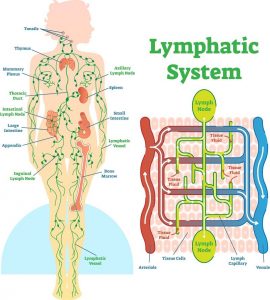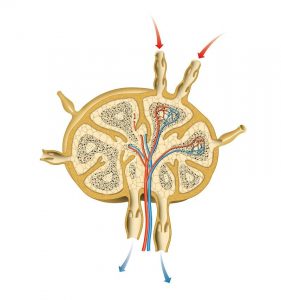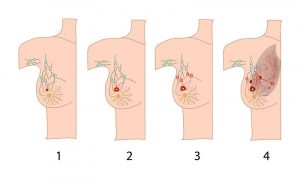Lymph Nodes And Cancer
What are lymph nodes?
Lymph nodes are small bean shaped structures that are a part of body’s immune system. There are hundreds of lymph nodes scattered in all areas of the body. These lymph nodes are connected by tubes called Lymphatic channels.
Where are the lymph nodes located?
There are hundreds of lymph nodes scattered all over the body. However in certain areas they are concentrated and form a group of nodes. E.g.: arm pits, groins, neck etc.

What do lymph nodes do? What is the function of lymph nodes?
The lymph nodes receive and process lymphatic fluid. Lymphatic fluid is the fluid around the cells which is not cleared by blood vessels. Just like how blood vessels carry blood, lymphatic channels carry lymph fluid from one specific area towards the heart. In their path there are multiple stations of lymph nodes. The lymph nodes are rich in white blood cells. These cells process the lymphatic fluid for bacteria, virus and cancerous cells.
If any abnormal elements are found in the lymphatic vessels the white cells in the nodes fight them and eliminate them.
When such an event happens the node enlarges, indicating increased production of white cells to fight the foreign substance that may harm the body.

A single lymph node, showing the flow of lymph fluid.
Why lymph nodes are important in cancer?
When the cancer becomes large enough, cancer cells start to break away from the main tumours. These separated cells can spread to other areas of the body via 2 routes. (a) By blood vessels (b) by lymphatic channels Spread by lymphatic channels happens much earlier in most of the cancers. Cancer cells travelling through the lymphatic channels end up in lymph nodes.
Most of these cells are killed inside the nodes. However, when a large number of cancer cells reach the nodes, the defense system of the lymph node is overwhelmed. Then the cancerous cells colonize the nodes and start multiplying there. This is when the lymph nodes start to enlarge.
How do I get to know if the cancer has spread to the nodes?
There are several ways by which cancer spread to nodes can be identified.
- Clinical examination: Enlarged nodes in arm pits, groin and neck can be easily picked up during examination. However the nodes have to bigger than 1-2cm to be appreciated in clinical examination
- Various imaging techniques: CT scan, MRI scan or PET scan.
Depending on the type of cancer you are suffering from, you will be advised one of these tests which will give important information about the spread of the cancer including the spread to lymph nodes - Lymph node biopsy: In some instances a biopsy is necessary to ascertain that the cancer has spread to the nodes.
If the cancer has spread to nodes, what does it mean?
If the cancer has spread to the nodes, it means that it is a relatively aggressive tumor.
A cancer that has spread to the nodes is given a higher stage compared to the one that has not.

Breast cancer stages: As the cancer spreads to the nodes, the stage increases.
Does cancer surgery involve removal of these nodes also?
Yes, it does.
The essential difference between a noncancer surgery and cancer surgery is the extent of surgery. In all the cancer surgeries the cancerous growth is removed with a clear cuff of normal looking tissue around it. This is done to remove the microscopic deposits of cancer cells as well, which are not visible to the naked eye. Along with this, the lymph nodes that receive lymph fluid from the concerned organ are also removed. This is done even when the examination and investigations do not reveal cancer spread to these nodes (there are several variations to this depending on the stage and organ affected).
Does my cancer treatment change if the cancer has spread to the nodes?
When the nodes are involved by the cancer it becomes essential to use more than one modality of cancer treatment (surgery, radiation and chemotherapy). This is necessary to control the cancer and prevent it from coming back.
For e.g.:
In breast cancer, if the cancer has spread to the nodes, then it is essential that patient takes chemotherapy after surgery.
In oral cancer, if the cancer has spread to the nodes, then the patient receives radiation after the surgery.
APPOINTMENT FORM
Related FAQ’s
PET Scan
PET scan is the abbreviation for Positron Emission Tomography. It is an imaging procedure, similar to CT scan. However, in PET scan a special drug is used, that emits radiation (a radiotracer).
Chemoport In Cancer Treatment
Chemoport is a medical device that is implanted into the patient’s body (just under the skin of the chest, most commonly), primarily for chemotherapy. It has a small chamber
Chemotherapy In Cancer Treatment
Chemotherapy is a general term used to refer to administration of chemotherapeutic drugs to kill the cancer cells.
